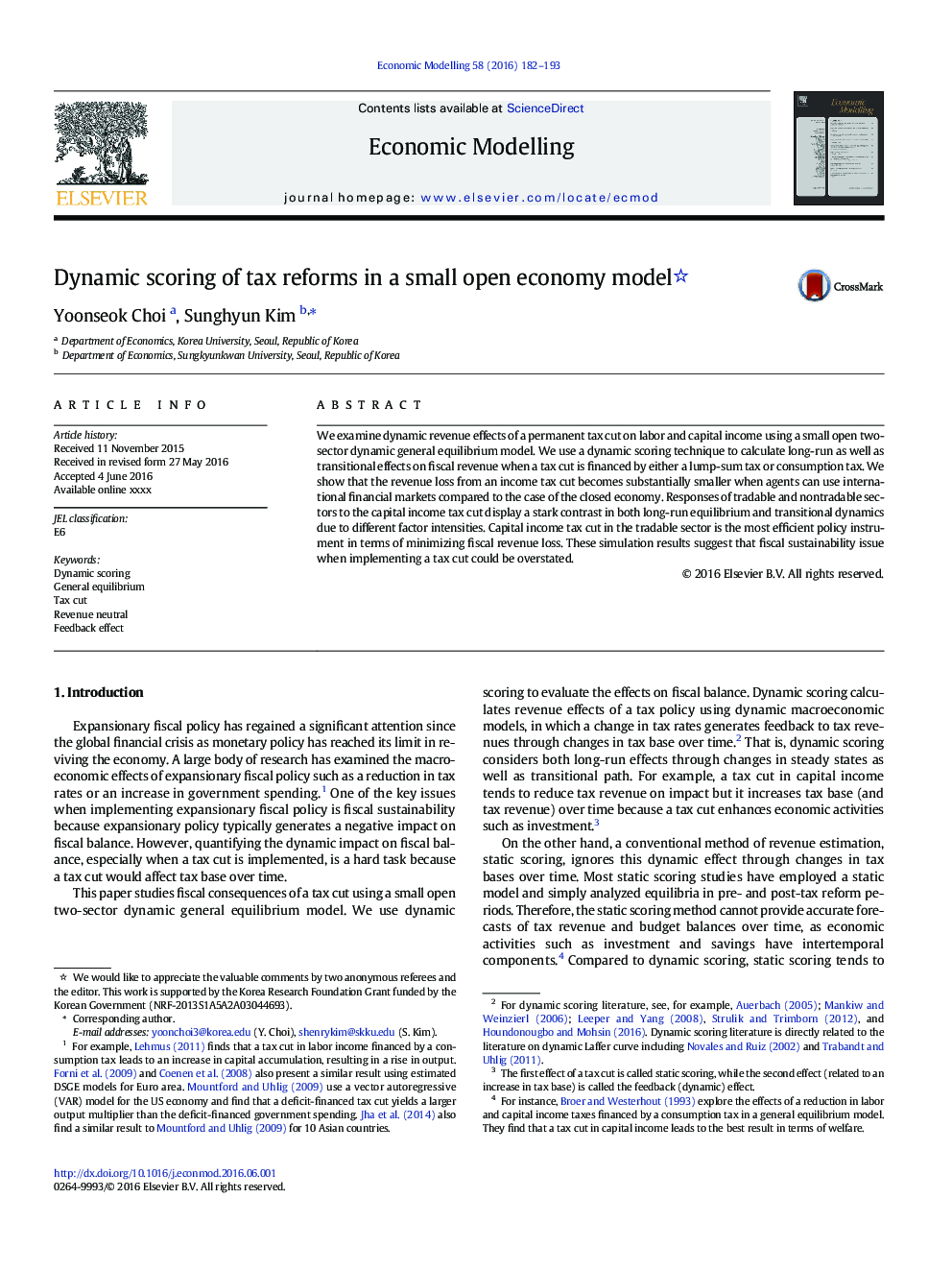| Article ID | Journal | Published Year | Pages | File Type |
|---|---|---|---|---|
| 5053474 | Economic Modelling | 2016 | 12 Pages |
Abstract
We examine dynamic revenue effects of a permanent tax cut on labor and capital income using a small open two-sector dynamic general equilibrium model. We use a dynamic scoring technique to calculate long-run as well as transitional effects on fiscal revenue when a tax cut is financed by either a lump-sum tax or consumption tax. We show that the revenue loss from an income tax cut becomes substantially smaller when agents can use international financial markets compared to the case of the closed economy. Responses of tradable and nontradable sectors to the capital income tax cut display a stark contrast in both long-run equilibrium and transitional dynamics due to different factor intensities. Capital income tax cut in the tradable sector is the most efficient policy instrument in terms of minimizing fiscal revenue loss. These simulation results suggest that fiscal sustainability issue when implementing a tax cut could be overstated.
Related Topics
Social Sciences and Humanities
Economics, Econometrics and Finance
Economics and Econometrics
Authors
Yoonseok Choi, Sunghyun Kim,
